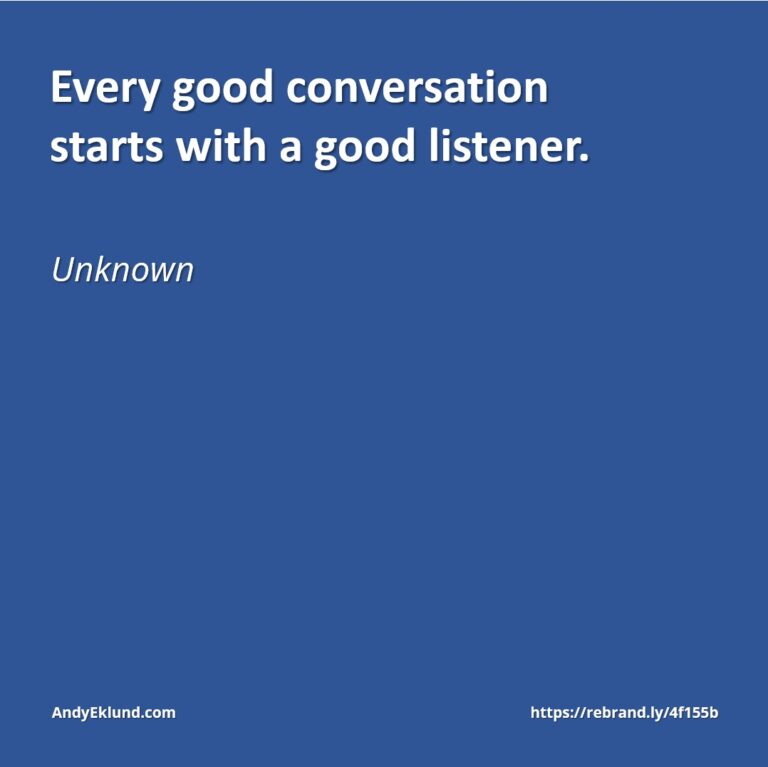Here are the basic listening techniques to use when listening and responding to the other party’s answers.
Each of the six points below can demonstrate that you’re pro-actively listening to the respondent, which in turn increases your listening effectiveness as well as encourages the other person to continue talking.
Whether you’re simply trying to be more empathetic, or you’re using these techniques to learn more through better understanding the audience and their problems, here are six ways to respond to show you are listening:
- Repeating what you’ve heard
- Reflecting
- Summarising and paraphrasing
- Itemising your response
- Argeeing and acknowledging
- Expanding
Let’s examine each point more specifically on how to respond.
1. Repeating what you’ve just heard, often called Mirroring
The easiest listening technique, you simply repeat what they said verbatim. You might add “… and correct me if I’m wrong” after you’ve repeated it to let them know you want to hear what they’ve said exactly.
If the respondent agrees what you’ve heard is correct, you continue the discussion. If not, they’ll correct your perspective, which also gives the other party a feeling of control. This ‘control’ is important because if they’re comfortable, they’ll reveal more.
That said, be aware that repeating what someone said exactly is primarily an act of remembering what you just heard. It does not necessarily – nor convincingly – demonstrate to the other party you understood what they said.
2. Reflecting
Let’s start with a brutal truth. Accurately listening to another person is difficult on its own. Listening accurately to yourself is not only challenging, but possibly also confronting.
Similar to Repeating or Mirroring, Reflecting means listening and responding by restating exactly what the person said. But, there’s a different point here. You want the respondent to hear themselves through their own words.
This is important as it helps the other person develop a more thorough understanding of themselves, if not (re-)consider their words, emotions and – most of all – their actions. Reflecting turns our intuition into their knowledge, so that the understanding of something can be more easily shared and discussed in a group.
3. Summarising and Paraphrasing
The next two listening techniques are similar as both demonstrate to the respondent two points:
- Their message was heard clearly, and
- You understand their response so well you can interpret it back to them using your own words.
They’re a shade different, in that …
- Summarising means to provide a complete and concise overview of what the respondent said, like “In ten words or less …” Summarising also helps an inarticulate person refine their answer.
You might say: “So what I heard you just say is … (add your summary) … but correct me if I’m wrong.”
- Paraphrasing means re-stating their answer using your own words, but without altering the meaning or context of what they said. Oftentimes, paraphrasing helps shorten – and perhaps clarify – what they’ve said.
You might say: “What you’re saying is this: (repeat but answer in your own words).”
4. Itemizing your Response
This listen and respond technique helps you clarify the respondent’s answer by organising and prioritising their key messages. This is usually done to get mutual agreement.
You might say: “Let me check my understanding. The problems you’ve outlined are (Point A), (Point B), and (Point C).” Again, not a bad thing to add “… and correct me if I’m wrong” in your own way.
5. Agreeing and Acknowledging
As with the previous response, this technique repeats the respondent’s key points, but in this case, you want to agree and expand the conversation, often to hypothetical or future considerations.
You might say: “I agree with you that (Point X) and (Point Y) are the right steps to do. What do you think should happen next?”
6. Expanding
This technique is similar to Agreeing and Acknowledging because you not only clarify key points, but also to ask for their opinion or attitude, or brainstorm ideas or possible solutions.
You might say: “You clearly believe that (Point A) and (Point B) need to happen very soon, but where and when do you think (Points X and Y) should be considered?”
A Few More Bits
Physically, use these listening and resopnding techniques with good eye contact and an attentive posture, either standing or sitting. Minimise other things, such as put your mobile away, or move away from unnecessary noise. This post – Listening, an Introduction – gives more suggestions on listening more effectively.
Emotionally, squash your agenda. As the cardinal rule in communications, you are the least important person in every conversation. So, klep your opinion in check and stick to the topic (as in, don’t use their answer to change the conversation focus to you.)
Finally, even the best listeners have a difficult time listening well every day. That’s why it’s good to have more than one listener if possible. This is particularly true if you also need to take notes. But, never out-number the respondents.
For a more detail overview, you might read other articles in this category of Questioning & Listening.
Have you any other suggestions to listen more effectively? Please add your thoughts and comments below.



No comment yet, add your voice below!